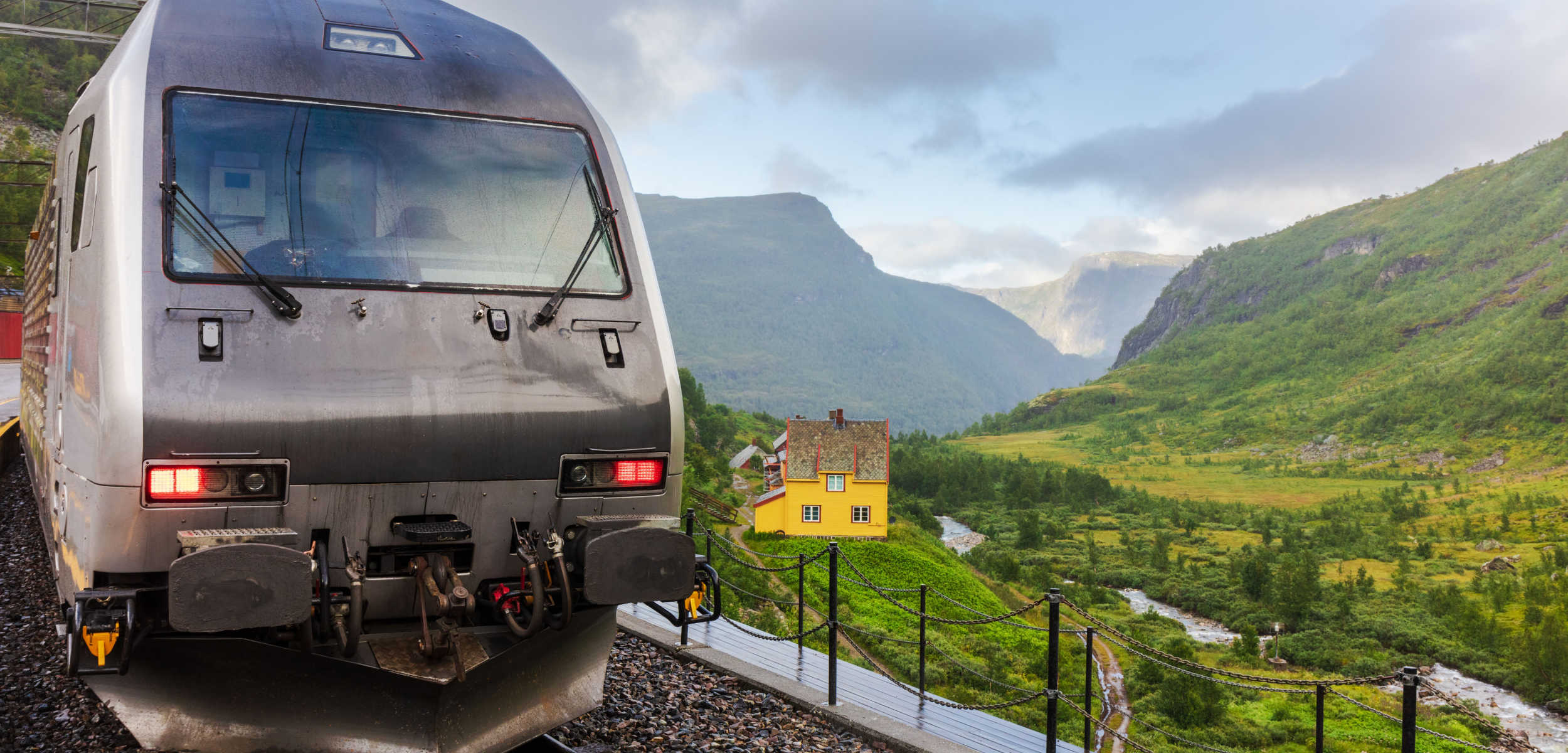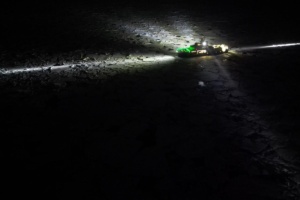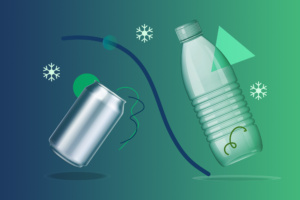Many think that trains are emission-free because they run on electricity, but this is a truth with modifications. Only about 60% of European railways have catenary lines and access to electricity, and the rest still runs on diesel.
From a socio-economic point of view, it is not necessarily straightforward to choose a new solution: electrifying the rest of the railway network is by no means free – neither measured in euros nor in emissions. Here, a complex technical-economic assessment of whether to go for electrification (partial or full), batteries or completely new alternatives such as hydrogen is necessary.
Hydrogen as a power source is not new, but developments in fuel cell technology and the fact that we are now getting ever closer to value chains for green hydrogen (so-called hydrogen valleys) mean that it is becoming increasingly relevant. At the same time, new propulsion technology requires new thinking both technically, regulatorily and in the energy system. We have made this type of assessment for lines in Norway, USA and Czechia, and they are not easy.
In collaboration with the railway authorities, SINTEF has assessed several alternatives for zero-emission operation on Norwegian non-electrified rail sections. The most interesting one has been the Nordland line, due to its extreme length and importance, but all non-electrified lines in Norway were examined. The common denominator for these is that catenary systems (KL systems) have proven to be both the cheapest to operate, but also the most expensive overall when costs for building the infrastructure are considered. Although SINTEF has not investigated this, research from England even suggests that the CO2 balance would also be negative for full electrification compared to diesel!
Long lifetime complicates
What complicates this type of analysis is often that the lifetime of the infrastructure is very long (often up to 50-100 years), which can initially support fairly large investments. At the same time, we know that no infrastructure is maintenance-free, nor are the locomotives. Over time, maintenance costs become a significant contribution to the total cost. As we can see from the curves above, in an economic assessment there is a high probability that the cost of building out electricity on the Nordland line over time will be many times more expensive than investing in alternative power sources.
Which technology is really the best also depends on how you define the criteria:
- Looking at the total cost, hydrogen and full-battery trains come out best (1-1.4 M€ per year cheaper than diesel for Nordland line);
- If you look at payback time, first place is taken by battery trains are with smaller batteries and halfway stop for fast charging (about 2 years)
- If you look at minimising the investment, biodiesel is the best, as essentially no investment is required.
Simulator compares costs
SINTEF has developed a simulator to make this type of technical-economic assessment where energy consumption is calculated based on models of the railway network and various locomotives, which enables us to compare the total costs of both operation and construction so that the alternatives can be compared.
We have now developed this further in the RegioHYT project, where we have started a collaboration with Czech research institutes to use the methodology from Norway on Czech railways. The railway is a long way from being harmonized through joint European regulations, and it is therefore a good exercise to count on alternatives to diesel operation in other countries.
RegioHYT is a collaboration between SINTEF and Czech research partners financed by EEA funds. Czechia has about twice as much railway as Norway, with many of the same challenges – relatively low degree of double track and about 30% electrified, with long tunnels and bridges, large differences in height and small routes with relatively low profitability – and thus difficult to justify full electrification.
On 24 April, we organized an open workshop for everyone who works with alternative power sources for railways, with the main focus on hydrogen propulsion at Lillestrøm. Here we received presentations from several actors, both project participants and external parties, from Norway, Czechia and the EU. The Czech ambassador to Norway was also present.
- Introduction to the project, by project manager Lukáš Polák from ÚJV Řež
- An introduction to fuel cells for rail by John Winterbourne of Ballard, one of the world’s leading fuel cell suppliers
- An overview of possible hydrogen sources in Czechia and associated opportunities for the production of green hydrogen, by Martin Paidar at the University of Chemistry and Technology in Prague
- Perspective from the European rail sector on low-emission transport by Miroslav Haltuf, from Europe Rail JU
- Data acquisition for simulation and how to select railways for analysis by Jan Perůtka from VUZ
- An ongoing proposal for a demonstration of hydrogen operation on the Nordland line by Jan Erik Salomonsen from Maintech
- An overview of hydrogen technology in the railway sector by Nikita Streltsov, also from ÚJV Řež
- First results in comparison of different zero emission technologies on Czech railways by Federico Zenith, SINTEF
- Possibilities for the production of green hydrogen in Meråker by Roald Boge from Meråker Hydrogen
- Perspective on how to implement the vision of low-emission transport on Czech railways by Jiří Cigánek from Správa Železnic, the Czech Republic’s railway infrastructure operator.
You can access the presentations by contacting federico.zenith@sintef.no.

Hydrogen trains are relevant
The most important conclusions from the workshop are that hydrogen trains are a relevant alternative in many scenarios, and the technology is in the process of being transferred to freight trains and switching locomotives. It is nevertheless important to carefully analyse which technology is best: for short lines, batteries may be a more suitable solution, especially if sections are already electrified. At the same time, one must think about whether moving commuters from diesel cars to diesel trains, or replacing diesel trains with zero-emission trains, gives more reduction in emissions, and that the availability of hydrogen along a railway can “spill over” to road and sea in the same area.
Is it then possible to make the railways completely zero-emission? Yes, and the pieces are already available, both for battery and hydrogen: there is still work to be done in the development of freight trains. But the most important thing is that hydrogen-powered trains can have a contagion effect on the absorption of hydrogen by road and sea, which has far greater emissions, and thus have much greater ripple effects in society.










Comments
Taking the contagion effect further, it’s useful to look to, say, 2050 when hydrogen technology has past the innovation phase and been in the integration phase for a while. “HC” is likely to be to AC what AC was to DC, moving inexhaustible but variable zero-carb energy in both space AND time.
The hybrid copper-hydrogen “soft grid” then is something that can, with advantage, be built toward now. That should weigh substantially toward hydrail investment over continued 19th century catenary investment.
Hello Stan, nice to hear from you. One thing I have not mentioned, regarding hydrogen vs. catenary, is that we actually have old catenary systems that are getting old (see e.g. https://www.tu.no/artikler/bane-nor-trenger-111-milliarder-til-fornying-av-jernbanen-de-neste-12-arene/532645?key=W7ilYs8V – I assume you can find some automated translation service).
It is very well possible that, instead of re-building the catenary, the next system could run on hydrogen now that there is a zero-emission alternative!